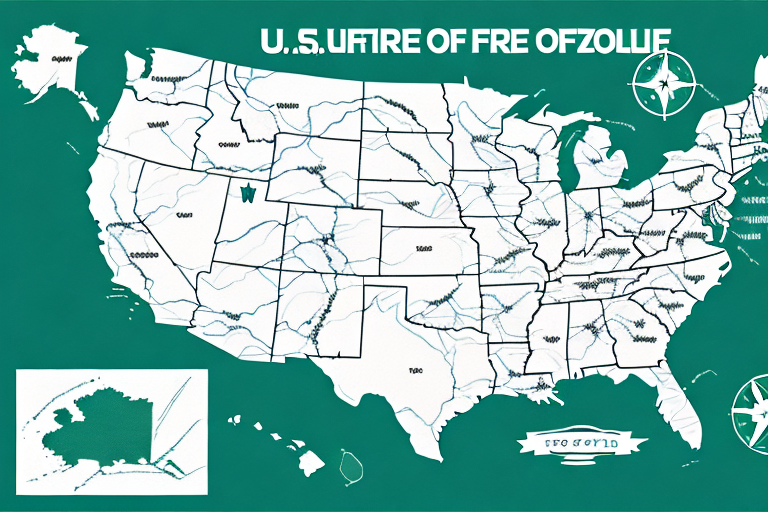Comparing FedEx, UPS, and USPS Shipping Rates: A Comprehensive Comparison Chart
As online shopping continues to surge, understanding and comparing shipping rates has become crucial for both consumers and businesses. Selecting the right shipping service not only ensures cost-efficiency but also enhances customer satisfaction through reliable and timely deliveries. This comprehensive comparison will guide you through the rates, services, and features offered by FedEx, UPS, and USPS, the three leading shipping providers in the United States.
Introduction: The Importance of Comparing Shipping Rates
Choosing a shipping service can be overwhelming given the multitude of options available. Comparing shipping rates is essential as it directly impacts your expenses and customer satisfaction levels. By carefully evaluating each provider's rates and services, you can optimize your shipping strategy to balance cost and efficiency effectively.
One key factor to consider is delivery time. Some services offer lower rates but have longer delivery times, which may not be suitable for urgent shipments. Conversely, expedited services ensure faster delivery but come at a higher cost.
Additionally, the reliability of the shipping service is paramount. Ensuring that packages are delivered on time and in good condition is crucial for maintaining customer trust. Reviewing customer feedback and performance ratings can provide valuable insights into each provider's reliability.
Factors to Consider When Choosing a Shipping Service
When selecting a shipping service, several factors should be evaluated:
- Delivery Speed: Determines how quickly your package reaches its destination.
- Package Size and Weight Limits: Each provider has specific restrictions that can affect your shipping choices.
- Additional Fees and Charges: Includes handling fees, insurance, and other surcharges that can increase overall costs.
- Destination Coverage: Ensures that the provider can deliver to all the regions you intend to ship.
- Tracking and Customer Support: Access to real-time tracking and responsive customer service can enhance the shipping experience.
Shipping Rates Comparison: FedEx vs. UPS vs. USPS
Comparing the shipping rates of FedEx, UPS, and USPS reveals distinct advantages for each provider based on package size, weight, and destination. According to the ShipScience Shipping Rate Comparison, USPS generally offers the most cost-effective rates for small and lightweight packages, while FedEx and UPS are more competitive for larger, heavier items.
Domestic Shipping Rates Comparison: FedEx vs. UPS vs. USPS
For domestic shipments within the United States, USPS tends to be the most affordable option, especially for lightweight packages. USPS also offers free package pickup, enhancing convenience for customers. However, USPS may have longer delivery times and limited tracking capabilities compared to FedEx and UPS, which provide faster and more reliable services but at a higher cost.
International Shipping Rates Comparison: FedEx vs. UPS vs. USPS
When shipping internationally, FedEx and UPS often provide more competitive rates and faster delivery times than USPS, particularly to regions with strong logistics networks like Canada and Europe. USPS remains a viable option for small and lightweight international packages, offering affordable rates but with longer delivery times and limited tracking.
Delivery Time and Speed Comparison: FedEx vs. UPS vs. USPS
Delivery speed is a critical consideration:
- FedEx: Offers some of the fastest delivery times, including overnight and two-day shipping options.
- UPS: Similar to FedEx, UPS provides expedited shipping services with reliable delivery timelines.
- USPS: Generally has slower delivery times but offers economical options like Priority Mail and First-Class Mail.
Choosing between speed and cost depends on your specific shipping needs. For urgent deliveries, FedEx and UPS are preferable, while USPS is suitable for less time-sensitive shipments.
Package Size and Weight Limits Comparison: FedEx vs. UPS vs. USPS
FedEx and UPS accommodate larger and heavier packages compared to USPS. This makes them ideal for shipping bulkier items. USPS, on the other hand, is better suited for smaller packages with specific size and weight constraints. Utilizing USPS's flat-rate shipping can be cost-effective for heavier items within their size limits.
Additional Fees and Charges Comparison: FedEx vs. UPS vs. USPS
Each shipping provider has its own set of additional fees:
- FedEx and UPS: Charge extra for services like package tracking, insurance, and delivery to certain areas. Expedited services also come with higher fees.
- USPS: May charge for package insurance and additional handling fees, but offers flat-rate options that can mitigate some extra costs.
It's essential to factor in these additional charges when comparing overall shipping costs.
Tracking and Insurance Options Comparison: FedEx vs. UPS vs. USPS
All three providers offer tracking and insurance, but the extent varies:
- FedEx and UPS: Provide comprehensive tracking systems and extensive insurance coverage, including guaranteed delivery times for certain services.
- USPS: Offers basic tracking and limited insurance options, which may not be sufficient for high-value or time-sensitive shipments.
For valuable or important shipments, the enhanced tracking and insurance from FedEx and UPS provide greater security and peace of mind.
Customer Service Comparison: FedEx vs. UPS vs. USPS
Customer service quality can significantly impact your shipping experience:
- FedEx and UPS: Have dedicated customer service teams available to assist with inquiries, issues, and support, ensuring a smooth shipping process.
- USPS: Offers online resources and a limited customer service presence, which might not be as responsive as FedEx and UPS.
Reliable customer support is crucial, especially when dealing with shipping delays or package issues.
Conclusion: Which Shipping Service is the Best for Your Needs?
The optimal shipping service depends on your specific requirements:
- FedEx and UPS: Ideal for businesses and individuals needing fast, reliable shipping with comprehensive tracking and insurance options.
- USPS: Best suited for sending small, lightweight packages cost-effectively, especially for non-urgent deliveries.
Consider factors like package size, weight, destination, delivery speed, and budget to determine the most suitable shipping provider for your needs. For international shipments, FedEx and UPS offer more robust services, while USPS remains a competitive choice for domestic and smaller international packages.
Tips for Saving Money on Shipping Costs
Beyond comparing rates, there are several strategies to reduce shipping expenses:
- Bundling Packages: Combine multiple items into a single shipment to take advantage of bulk shipping rates.
- Negotiating Rates: Businesses shipping large volumes can negotiate discounted rates with carriers.
- Using Flat-Rate Shipping: USPS's flat-rate options can be cost-effective for heavy items within size limits.
- Optimizing Packaging: Use lightweight and appropriately sized packaging to minimize weight-based costs.
How to Choose the Right Carrier for Your Business
Selecting the appropriate carrier involves assessing your business's unique shipping needs:
- Evaluate Delivery Requirements: Determine if speed or cost is more critical for your shipments.
- Assess Coverage Areas: Ensure the carrier can deliver to all necessary destinations.
- Consider Tracking and Reporting: Robust tracking capabilities and detailed reporting can enhance your shipping management.
- Review Customer Support: Reliable support is essential for resolving any shipping issues promptly.
How to Track Your Shipment with Each Carrier's Tracking System
Effective tracking ensures visibility and security of your shipments:
- FedEx: Utilize the FedEx tracking number on their official tracking page for real-time updates.
- UPS: Enter your UPS tracking number on the UPS tracking portal to monitor your package.
- USPS: Use the tracking number on the USPS tracking tool for status updates.
Maintaining regular checks on your shipment's progress helps anticipate delivery times and address any potential delays proactively.




















